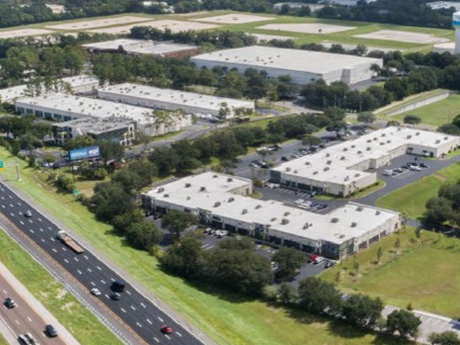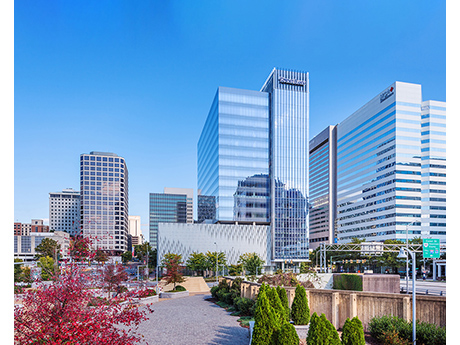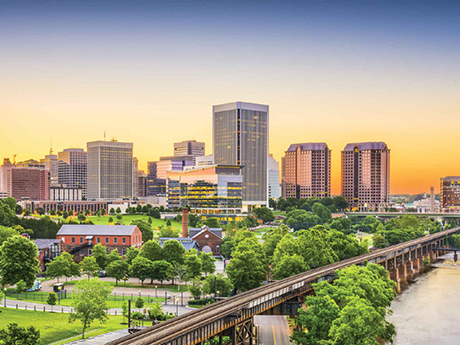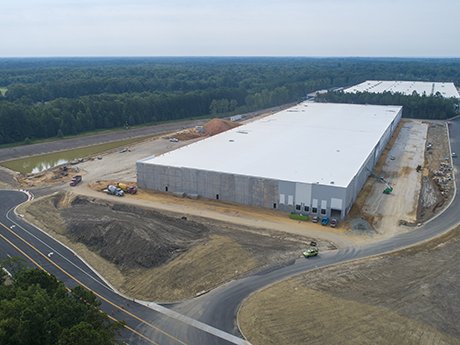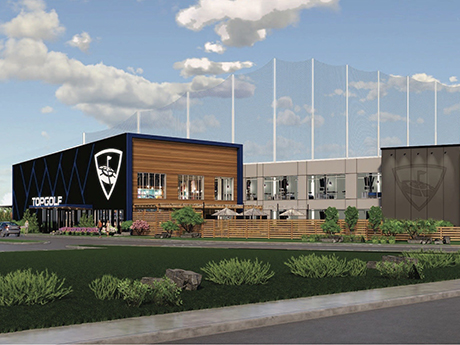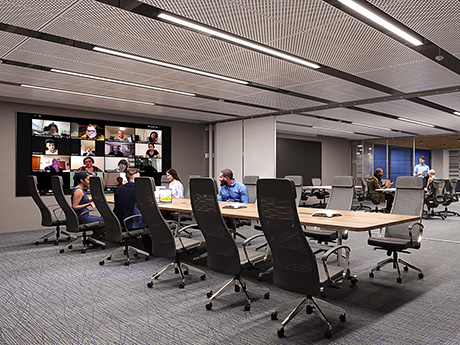The Orlando office market is finally seeing positive absorption across all major submarkets. An impressive second quarter recorded 122,423 square feet of positive absorption, bringing the total for the first half of the year to 156,778 square feet. As companies have been making decisions on their return to the office, the Orlando market has seen increased activity with numerous large, long-term leases signed, predominantly fueled by smaller local users and corporate relocations from other markets. Kimley-Horn’s relocation and expansion to 60,000 square feet in downtown Orlando marked one of the largest transactions in the past five years. While still up 20 basis points year-over-year, total vacancy saw its first drop in the last four quarters. Vacancy was consistently holding at 13.3 percent from third-quarter 2021 until it fell 30 basis points this quarter to 13 percent. The major driver of the drop was vacant sublease space being withdrawn or leased. Although firms are still seeking sublease route for their office space, we believe more space will be given back in the near term. We are seeing an increased pattern of flight to quality, where corporate users are focusing their attention on submarkets and assets that provide higher quality workplaces and …
Southeast Market Reports
Still going strong after two years since the onslaught of COVID-19, Orlando’s industrial market has seen a steady increase of robust leasing activity and development, with no signs of stopping. The growth is attributable to record-low vacancy, emerging construction and increasing demand from existing tenants expanding their businesses and new tenants in the market. Economic conditions affecting the market are similar to last year, as labor shortages and supply chain issues remain. However, the industrial sector overall has not been adversely affected. Orlando continues to be the place for existing business advancement and new business development. The city’s population growth outpaces that of any other city in Florida due to its central location, warm weather year-round, no state tax and relative affordability. As such, the market is seeing large enterprise retail and consumer goods companies claiming their stake in the Sunshine State. Robust leasing activity The total industrial leasing volume in the Orlando market for the second-quarter 2022 was 4.5 million square feet, 43 percent of the total leasing volume seen in 2021. Eight leases over 100,000 square feet were signed to date in 2022. The largest lease in the first half of 2022 was the new 294,787-square-foot Coca-Cola lease …
The high quality of life and relatively low cost of living in Richmond, coupled with sustained investment in live-work-play infrastructure, has led to population growth and a surge in investor interest in the city. The job market is showing strong signs of recovery with an unemployment rate of 3.2 percent, which is 40 basis points below the national average. Although office-using employment remains elevated at 3 percent from pre-pandemic levels, office vacancy rates remain relatively stable at 11.2 percent. Live-work-play rules the day Richmond has become a hot spot for millennials, boasting a low cost of living, high quality of life and amenity-rich neighborhoods. While the broader Richmond market has recorded 10 percent population growth since 2010, key submarkets in the urban core are growing at a faster pace, with Scott’s Addition recording 23 percent population growth during the same period. Developers have capitalized on this increased demand for city living, building out the urban core with multifamily and mixed-use developments in trendy submarkets. Scott’s Addition and Manchester — which have more breweries per capita than any other neighborhood — have added a combined 3,000 apartment units in the last five years, with an additional 1,300 units currently under construction. …
With a 20 percent increase in population in the City of Richmond over the past half decade, and more to come, the city still struggles to attract national retail tenants such as The TJX Cos., Williams-Sonoma and Ann Taylor LOFT, as well as other soft and hard goods users. What Richmond does not struggle attracting are breweries, distilleries, regional and local restaurant operators and many start-up retailers dipping their toes into the growing 22 to 35 demographic calling Scott’s Addition and Manchester home. The food-and-beverage scene in Greater Scott’s Addition is blowing up with the addition of restaurant operations such as ZZQ (rated the best BBQ in Richmond), Lucky AF (from EAT Restaurant Partners), Wood & Iron, Tazza Kitchen and the James Beard Award-winning Peter Chang’s. When coupled more than 15 breweries, distilleries and the city’s only meadery, this energy is attracting ‘retailtainment’ such as River City Roll, Bingo Beer, The Circuit, Tang & Biscuit, Movieland by Bow Tie Cinema and Brambly Park. TRP (Thalhimer Realty Partners), Historic Housing (Louis Salomonsky’s firm) and Capital Square 1031 are local companies leading the developments, and Greystar and Bonaventure have come in from out of town to plant their flag as well. The …
Similar to the early stages of the COVID-19 pandemic in 2020, a gap has started forming with price expectations between apartment owners and investors. The price disparity at the start of the pandemic was driven namely by market uncertainty, adjustments to underwriting assumptions and increases to lender and insurance escrow requirements. As the pandemic played out, we saw a mass exodus from denser gateway cities, an influx of government stimulus money and a phasing out of state-specific stay-at-home orders that allowed the economy to open back up. Capital moved away from the retail and hospitality industries hit the hardest, with the multifamily sector reaping the benefit. The second half of 2020 saw a dramatic rise in rents, occupancy and new lease and renewal signings. These trends led to a calming of the debt and capital markets, paving the way for the price gap between buyers and sellers to evaporate as an unprecedented wave of investment flooded into the multifamily space, with 2021 hitting a new high of $213 billion of investment volume, well above the previous peak of $129 billion in 2019, according to Yardi Matrix data. Now midway through 2022, we’re seeing a buyer-seller price gap begin to take …
At the mid-year mark, industrial occupancy in the greater Richmond area remains strong, closing with an overall occupancy rate of 98.5 percent in the categories being tracked (Class A, B, select C vacant and investor-owned product with a minimum of 40,000 square feet total RBA). Class A occupancy remained steady at 97 percent at the end of the second quarter. Class B occupancy also remained steady at 94 percent at the end of the first quarter. CoStar Group reports overall industrial occupancy at 96.8 percent for product of all sizes, including investor-owned facilities, but excluding flex space (minimum 50 percent office). There remains a shortage of space in the 25,000- to 50,000-square-foot range as most spec buildings being built are larger single-tenant buildings. Richmond’s strategic Mid-Atlantic location along Interstate 95 provides access to 55 percent of the nation’s consumers within two days’ delivery by truck, and in addition to being the northernmost right to work state on the Eastern seaboard, Virginia has once again been named as the No. 1 state for business by CNBC. Metro Richmond has a civilian labor force of almost 700,000 (1.03 million population) with unemployment rates at 3.7 percent as of June. With 12 Fortune …
Inflation is here. Is the Memphis multifamily market built to withstand it? Coming off an unprecedented year of sales volume in 2021, Memphis multifamily assets continue to be in high demand despite rising interest rates. While year-over-year sales volume might be down, the average market sale price per unit increased by 10 percent to $90,700 over the same period, as of second-quarter 2022. While overall market rent per unit growth is off double-digit highs from 2021, it is still up a sturdy 8 percent year-over-year. Strong occupancy levels, low concession rates and limited on-market supply is keeping pricing buoyant, leading to steady cap rates in the face of rising debt cost — at least for now. Capital investment and renovation to existing multifamily properties contributed greatly to both rent growth and sales volume in 2021. Memphis is a very appealing option for investors seeking value, as over 50 percent of all transactions in 2021 fell within the $40,000 to $80,000 per unit range, which is much more competitive than many primary markets. With over two-thirds of existing inventory built before 2000, the vintage of current inventory provides ample opportunities to reposition assets. Local government entities have actively played a role …
Memphis has seen a tight retail market for quality space and development opportunities since the COVID-19 pandemic. Our market sits at a 3.5 percent vacancy rate, according to CoStar Group analytics, and overall retail leasing activity is strong. Memphis has benefitted from a consumer base that is ready to return to the pre-pandemic rhythms of life. Retail sales have been healthy overall, with strong increases in sales of restaurants, particularly restaurants with a drive-thru. Rents for high-demand space have increased accordingly given the lack of quality opportunities for new-to-market or expanding retailers. Investment sales activity has been steady with an average cap rate around 7 percent, according to CoStar. Well-located and stable shopping centers are trading lower. A handful of high-profile institutional assets are either on the market or about to hit the market, and we expect those to trade at sub-7 percent cap rates. Ford Motors and SK Innovation’s new electronic vehicle (EV) and battery production facility in Stanton, Tenn., (25 miles east of Memphis) is anticipated to have a positive impact on the local economy. The $5.6 billion mega campus, called Blue Oval City, will add around 5,700 new jobs at its plant, with several more thousands indirectly …
2021 was a banner year for the Memphis industrial market by virtually every measure. Leasing exceeded 32 million square feet, easily doubling the average of 12.8 million square feet per year; annual net absorption reached 12.7 million square feet, the highest ever recorded; 14.6 million square feet of inventory delivered to the market; rental rates reached historic highs; and investment volume topped $2.2 billion. The potent demand that carried the market to such record-setting extremes continued into the beginning of 2022, with leasing activity in the first quarter approaching 6 million square feet and net absorption surpassing 3.3 million square feet. Sustaining the steady upward trend the Memphis market has followed since the beginning of 2019, the direct vacancy rate rose 50 basis points from last year to 6.8 percent, but this increase is largely due to the profusion of spec product rather than any significant moves out of the market. In typical fashion, the bulk of leasing activity occurred in the Southeast, DeSoto County and Marshall/Fayette County submarkets, comprising more than 75 percent of the quarter’s total volume. But even the Northwest submarket has seen more action recently with the delivery of Amazon’s 181,500-square-foot last-mile facility in the Raleigh …
The Raleigh-Durham office market is poised for future growth as it exits the pandemic, however the question for us all is when. Re-occupancy of buildings by office users has been stubborn in the current post-pandemic environment. Despite the sluggish activity since the beginning of the year, there have been bright spots with companies becoming more strategic about their office space decisions as they return, especially in newer projects that offer best-in-class experiences. Moving forward, there will be economic and geopolitical headwinds that may interfere with the pace of recovery. However, investors and developers continue to the see the value in the market due to our highly educated workforce, favorable business climate and one of the fastest growing population centers in the country. The return of the workplace is the main driving factor for the activity in the office leasing market. As companies execute their re-occupancy plans, they are reevaluating their existing buildings, footprints and workspaces in a way that we have never seen before. Forward thinking organizations are making decisions to create unique spaces where their employees want to come to work, rather than a space where they have to come to work. We have quickly seen that one size …



